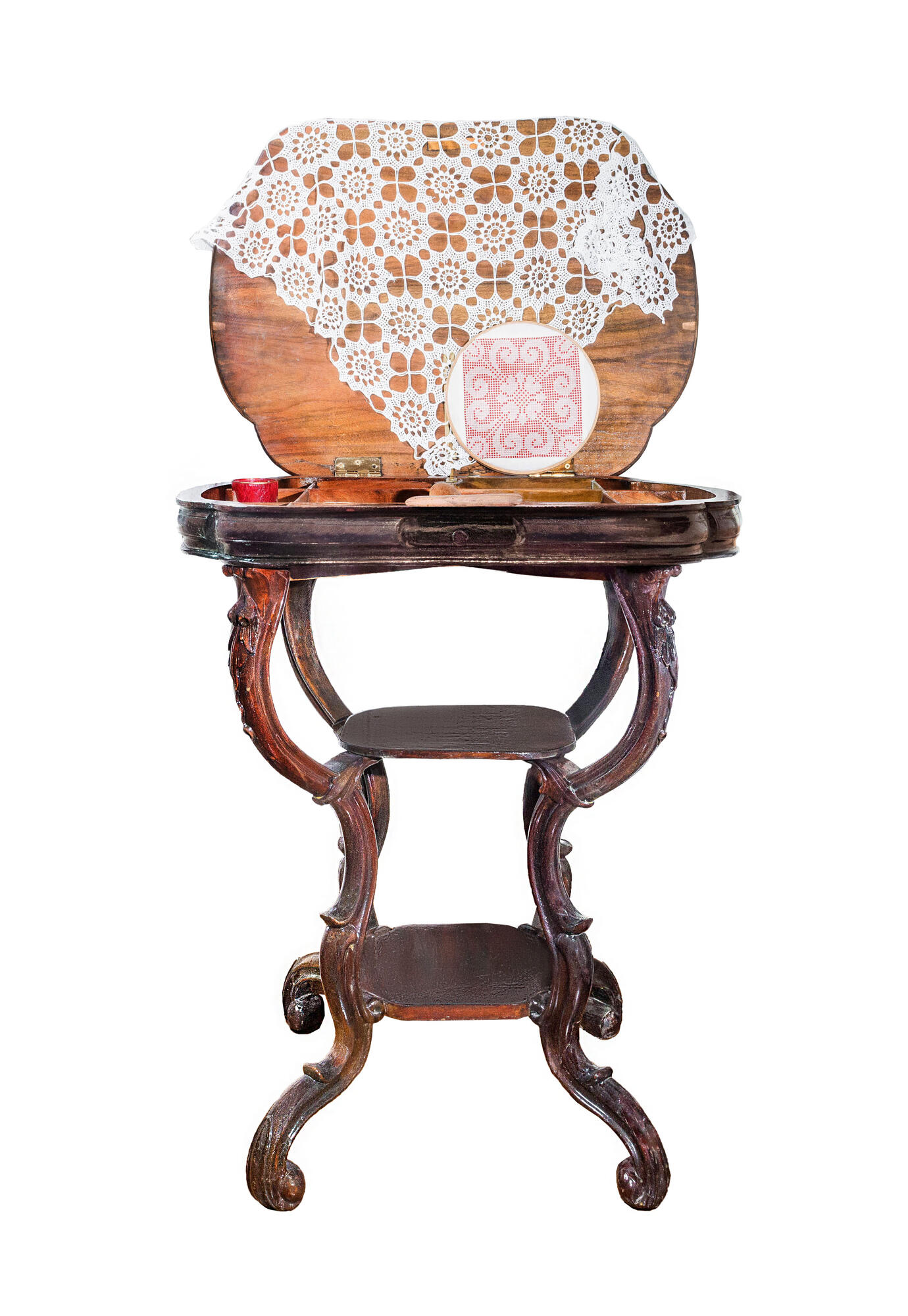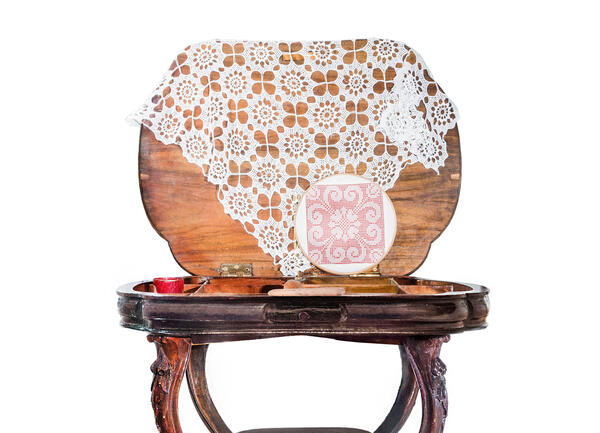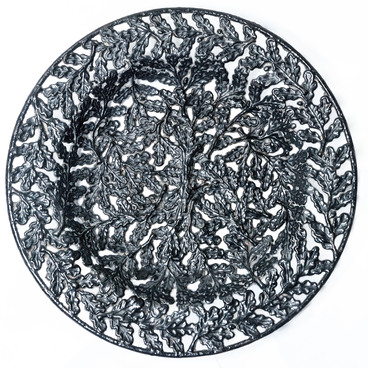In the room of Anna Mamina, the mother of the writer Dmitry Mamin-Sibiryak, there is a small table for needlework next to the window. At the table, the room owner embroidered in various techniques: cross stitching, beadwork, satin stitching; she also crocheted and sewn.
Table for needlework
Creation period
the early 19th century
Place of сreation
Ekaterinburg
Dimensions
75x64x47 cm
Technique
wood, varnish, carving
Collection
Exhibition
3
Open in app#1
Table for needlework
#4
#6
I saw neither my father nor my mother idle. Their day was always full of work,
recalled Mamin-Sibiryak about his parents
#5
The dark wood table was made at the beginning of the 19th century. It is lacquered on top. It has a semi-circular table top, its lid is hinged, and inside, there are nine compartments for thread, yarn, braid, and working tools.
The table stands on four high shaped legs with a curved top part, decorated with carvings. In between, there are two shelves.
Similar pieces of furniture began to be used in the 18th century. The light and sturdy table quickly became popular because of its small size and versatile purpose. It was referred to as a type of movable furniture: it was often placed by the window during the day, closer to the light, and transferred to the study in the evening.
At such tables, people were engaged in needlework, writing letters, reading and looking at albums. They were often made in composing technique — several wood species were used, and richly decorated. The drawings and patterns on tabletop varied: baskets of fruit, vases of flowers, garlands of wild and garden flowers, views of estates and romantic landscapes, antique ruins and city panoramas.
Anna Mamina was born in Gorny Shchit, in the family of the village priest Semyon Stepanov. When she was 17, she married Narkis Mamin, a graduate of the Perm Theological Seminary. The couple had four children: Nikolay, Dmitry, Vladimir, Yelizaveta. At the age of 46, Anna Mamina became a widow.
In August 1878, the family moved from a small factory settlement to Yekaterinburg. Anna Mamina and her children lived for seven years in private apartments, which Dmitry Mamin-Sibiryak rented for them. In March 1885, he bought a house at 27, Sobornaya street (now Pushkina street) with the royalties from the publication of the book.
Anna Mamina lived in this house for 25 years. Dmitry Mamin-Sibiryak maintained a friendly relationship with his mother until the end of her life. The archives hold more than 450 letters that her son wrote to her.
The table stands on four high shaped legs with a curved top part, decorated with carvings. In between, there are two shelves.
Similar pieces of furniture began to be used in the 18th century. The light and sturdy table quickly became popular because of its small size and versatile purpose. It was referred to as a type of movable furniture: it was often placed by the window during the day, closer to the light, and transferred to the study in the evening.
At such tables, people were engaged in needlework, writing letters, reading and looking at albums. They were often made in composing technique — several wood species were used, and richly decorated. The drawings and patterns on tabletop varied: baskets of fruit, vases of flowers, garlands of wild and garden flowers, views of estates and romantic landscapes, antique ruins and city panoramas.
Anna Mamina was born in Gorny Shchit, in the family of the village priest Semyon Stepanov. When she was 17, she married Narkis Mamin, a graduate of the Perm Theological Seminary. The couple had four children: Nikolay, Dmitry, Vladimir, Yelizaveta. At the age of 46, Anna Mamina became a widow.
In August 1878, the family moved from a small factory settlement to Yekaterinburg. Anna Mamina and her children lived for seven years in private apartments, which Dmitry Mamin-Sibiryak rented for them. In March 1885, he bought a house at 27, Sobornaya street (now Pushkina street) with the royalties from the publication of the book.
Anna Mamina lived in this house for 25 years. Dmitry Mamin-Sibiryak maintained a friendly relationship with his mother until the end of her life. The archives hold more than 450 letters that her son wrote to her.
#3
Ministry of Culture of the Russian Federation
read morehide
00:00
00:00
1x
Table for needlework
Creation period
the early 19th century
Place of сreation
Ekaterinburg
Dimensions
75x64x47 cm
Technique
wood, varnish, carving
Collection
Exhibition
3
Open in app
Share



